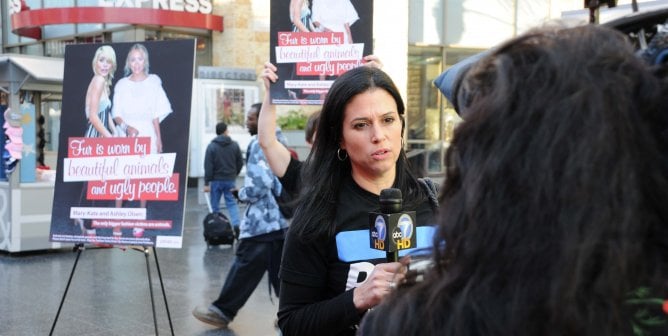Triple Crown Deaths Prompt PETA to Call For CT Scans of All Belmont Stakes Entrants
For Immediate Release:
May 23, 2023
Contact:
David Perle 202-483-7382
PETA wants New York officials to get serious about preventing horse fatalities during the state’s biggest racing weekend of the year. On the heels of nine horses’ deaths at Churchill Downs and after a Bob Baffert–trained horse sustained a fatal injury at Pimlico Race Course on Preakness Stakes day, today PETA urged the New York State Gaming Commission to mandate CT scans of all Belmont Stakes entrants and, if possible, all other horses racing that weekend.
In its letter to the commission, PETA makes the point that 90% of horses who suffer catastrophic breakdowns have preexisting injuries, which CT scans would pick up, at the site of the bone break. CT imaging has been used successfully by Racing Australia, which instituted a mandatory screening policy for the Melbourne Cup following a high-profile horse racing death and a public outcry in 2020.
“Now that the New York legislature has voted to loan Belmont Park $455 million, the expectation should be that, at the very least, every effort be made to keep the horses alive on the biggest stage of the year,” writes PETA Senior Vice President Kathy Guillermo.
According to statistics provided by the commission, 99 horses died last year on New York tracks, including 46 at Belmont Park, which ranks among the deadliest tracks in the nation.
PETA—whose motto reads, in part, that “animals are not ours to use for entertainment”—opposes speciesism, a human-supremacist worldview. For more information on PETA’s investigative newsgathering and reporting, please visit PETA.org, listen to The PETA Podcast, or follow the group on Twitter, Facebook, or Instagram.
PETA’s letter to the New York State Gaming Commission follows.
May 23, 2023
Gaming Commissioners
New York State
Via e-mail
Dear Commissioners:
In the wake of the ten deaths at Churchill Downs since the week before the Kentucky Derby and the fatal breakdown of the Bob Baffert–trained Havnameltdown at Pimlico on Preakness Stakes day, the entire world now has its eyes on the safety of the horses in the Belmont Stakes. We urge the commission to do everything in its power to mitigate catastrophic injury risks, including by requiring the use of the most advanced screening technology.
The additional safety protocols introduced at Pimlico were extensive. Unfortunately, they proved to be insufficient, particularly because of the industry’s reluctance to bar trainers known to be problematic and the difficulty of detecting preexisting injuries or vulnerabilities, which likely led to the death of Havnameltdown, who had been administered a powerful corticosteroid injection in a joint the month before.
We urge the commission to require mandatory CT scans of all Belmont Stakes entrants. Decades of necropsy reports and scientific studies have conclusively shown that 90% of horses who suffered catastrophic breakdowns had preexisting bone microfractures at the site of the injury. Such injuries, often not detectable in other ways, can be identified through CT scanning.
If you are serious about reducing fatalities, there is no protocol or method more crucial than the use of this technology.
After the high-profile death of the horse Anthony Van Dyck in the Melbourne Cup in 2020 and the resulting public outcry, Racing Australia instituted a mandatory CT scan screening policy, which has successfully prevented a repeat, avoidable tragedy in Australia’s most famous race.
The NYSGC should take similar emergency action and temporarily install CT scanning equipment at Belmont Park or coordinate this testing at a nearby veterinary facility. Standing, three-dimensional CT technology, which doesn’t require anesthesia, should be used. We would be happy to offer our assistance.
We strongly recommend that this CT scanning technology be used to screen all the horses racing on Belmont Stakes weekend, but we understand the logistical challenges to introducing this equipment and managing this volume in less than three weeks. Therefore, we urge the NYSGC to facilitate the CT scanning of at least the Belmont Stakes entrants, as this race is an exceptionally demanding 1.5 miles on dirt for these 3-year-olds against intense competition.
After the recent series of scandals and deaths, horse racing has never been closer to having its “social license” revoked. A gruesome injury in the Belmont Stakes could be the death knell for the industry. Now that the New York legislature has voted to loan Belmont Park $455 million, the expectation should be that, at the very least, every effort be made to keep the horses alive on the biggest stage of the year.
I look forward to hearing from you.
Sincerely,
Kathy Guillermo
Senior Vice President
Equine Matters Department
cc: Scott Palmer, V.M.D., Equine Medical Director, NYSGC
David O’Rourke, CEO and President, NYRA


